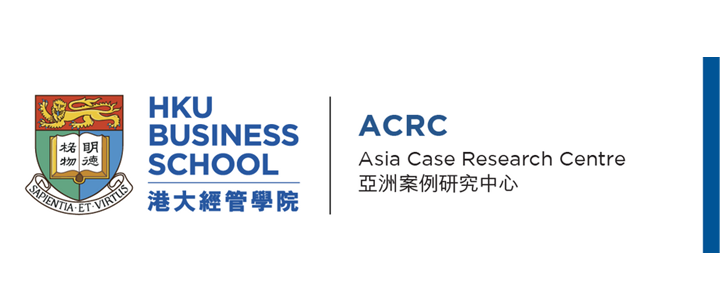Case-based Approach
November 20, 2023 2024-03-06 12:48Case-based Approach
Asia Case Research Centre
Case-Based Approach
The HKU MBA programme adopts an experiential learning approach, with the extensive use of business cases published by the renowned Asia Case Research Centre (ACRC). Written by eminent professors from the HKU Business School faculty and prominent industry leaders, the business case studies encourage critical thinking that enables students to become effective problem-solvers and decision-makers in today’s rapidly changing business settings. The programme’s relatively small class sizes allow for extensive interaction and collaboration.

ACRC
Examples of these cases
WeWork’s Pre-IPO Value: USD47bn Or USD8bn?
The We Company (WeWork) rented office spaces for long-term leases, turned them into hip offices, and then offered them for short-term leases. Its charismatic co-founder and CEO Adam Neumann, explosive growth funded by significant cash injections from SoftBank and its USD100bn Vision Fund, and a pre-IPO valuation of USD47bn ensured the company was one of the most talked-about unicorns in August 2019.
WeWork’s valuation was similar to that of a high-tech stock with high price multiples. From FY 2016 to FY2018, its losses totalled USD3.3bn, outstripping revenue at USD3.1bn. After the release of Form S-1 pre-IPO filing documents, numerous financial analysts and the press scrutinized WeWork. In addition to its lower than expected financial performance, some questioned WeWork’s business model, its governance model, and its valuation. In the weeks that followed, the IPO was withdrawn, WeWork announced plans to lay off 2,000 staff, Neuman was removed as CEO, and Softbank doubled down on its bet in order to keep the company going. This latest share purchase by Softbank valued the company at USD8bn, compared to USD49bn two months earlier.
Financial Analysis of Ocean Park: The Theme Park that Survived on Government Bailout
This case investigates the downfall of Ocean Park Corporation (Ocean Park or the park) from the perspective of financial statement analysis. Ocean Park’s performance significantly declined from a surplus of HKD127.2mn in FY2013 to a severe deficit of HKD557.3mn in FY2019. This was mainly attributable to the shrinking revenue size and mounting difficulties in controlling the operating costs during this period. In 2020, Ocean Park was hard-hit by the coronavirus pandemic, which pushed it further to the verge of liquidation. After rounds of debates, the Hong Kong legislature eventually approved a relief fund of HKD5.4bn in taxpayers’ money.
The case seeks to highlight the financial ratios and metrics commonly used in financial statement analysis, and their interpretations. It provides insights on Ocean Park’s financial performance in terms of profitability, liquidity, solvency, and operational efficiency. Students will tackle practical questions regarding financial statement analysis of Ocean Park from FY 2013 to FY2019, and the financial impact of the relief fund by means of pro forma financial statements over the next few years.
Xiaomi: At a Crossroads
Investors had lost confidence in Chinese smartphone maker Xiaomi.
It was once one of the world’s most valuable private technology companies, valued at USD45bn after four years of operation. With Xiaomi, founder Lei Jun had created an internet company with an online business model that made tech-driven products with minimal margins. It focused on building value around the phone with products and services. Consumers quickly became fans. In 2014, Xiaomi became China’s best-selling smartphone brand and also the world’s third largest. Investors anticipated continued growth. But the excitement around the company did not last long. In 2016, Xiaomi’s overall smartphone shipments fell 36% from the previous year after a series of supply chain issues. To revive investor confidence, Lei adjusted the company’s strategic direction and led a series of internal restructurings.
Its long-awaited IPO in 2018 was priced at the bottom of the range and raised USD4.7bn, less than half of its initial target. Worse, six months after the IPO, the company’s market capitalization had dropped by half. According to some analysts, the company had been “overhyped” and Xiaomi was “just a hardware company.” But the image of Xiaomi as a value-for-money brand stuck. Some even gave it the nickname “assembly house.” What could Xiaomi do to revive the confidence of investors?
iPhone’s Supply Chain Under Threat
The outbreak of COVID-19 (coronavirus disease, 2019) posed unprecedented challenges to the global supply chains. As a leading and innovative supply chain that achieved just-in-time manufacturing, Apple’s performance was put in the spotlight. This case describes how Apple’s supply chain has coped with the COVID-19 pandemic.
Apple’s supply chain has weathered natural disasters, such as earthquakes, fires, floods, and SARS; the risks and challenges brought by the outbreak of COVID-19 were unprecedented and complicated. Unlike the symptoms of SARS patients with high fever, the symptoms of COVID-19 varied; some patients had no symptoms at all, which made them difficult to identify. Moreover, the pandemic complicated supply chain planning because it was difficult, if not impossible, to predict where the next epicentre would be and what measures local governments might take to prevent the further spread of the virus. Social distancing was effective to control the pandemic, but it brought both challenges and opportunities for companies like Apple. On the one hand, social distancing slowed the manufacturing process and had a negative impact on the economy, which could dampen consumer confidence and reduce demand. On the other hand, social distancing boosted the demands for electronic devices, as many people had to work at home.
Using this case study, students will understand the importance of risk management in supply chain management and learn the challenges and opportunities of the disruption posed to business operations. The case provides an opportunity for students to discuss and understand why some companies can recover from the disruptions better than other companies and how a resilient supply chain can improve a company’s competitiveness.
Next Capital: Leveraging Opportunities in the Hong Kong IPO Market
The case introduces IPOs in Hong Kong from the perspectives of both issuers and investors. Hong Kong was a popular choice among many local and nonlocal companies for listing. It ranked as first globally in terms of total proceeds raised for 5 out of 10 years between 2011 and 2020.
The case is set in the fourth quarter of 2020, when the Ant Group entered Hong Kong for its IPO. Students take on the role of Lin Wong, head of the investment team of a new investment fund under Next Capital Investment Limited. Students have the opportunity to learn about IPOs from various perspectives: as pre-IPO investors in a fund’s investment that is ready to go public, as retail investors to subscribe for high-profile IPOs in the market, and as potential cornerstone investors to subscribe for a portion in the global offering of an IPO.
Diversity in a Global Context: Making the Right Hire to Lead Asia
As organizations have grown more aware and focused on diversity, equity, and inclusion (DEI) issues, it is important to consider how such initiatives translate in a global setting. Many DEI policies are considered and interpreted through a Western social and business lens. Though such policies strive to address undoubtedly important DEI issues, how do such policies and related practices influence business decisions in a non-Western business setting is an important consideration that often goes unnoticed.
In this case, Jarom Stuart, the CEO of Prime Toys Global (“Prime”), a listed toy company needs to make a hiring decision for a senior person that will lead Prime’s Asia business, which is strategically important to the company. He is picking between two very qualified candidates, Isabella Zhou and Caleb Young. On its face, hiring Isabella would seem to enhance Prime’s diversity, however, given Caleb’s background and the nature of the Asian business, Caleb could also be considered to contribute to diversity, albeit in a way that is not typically captured in DEI metrics. Given the above, the case focuses on Jarom’s hiring decision, which requires him to interpret and grapple with what diversity means in a more global, non-Western context.
Louis Vuitton Moët Hennessy: Expanding Brand Dominance in Asia (MNC)
This case explores the predicament Louis Vuitton Moët Hennessy (LVMH) faced with respect to brand management when expanding its operations in China. In 2004, Asia accounted for about 40% of the sales of LVMH, however, it faced several challenges. One of its primary concerns was protecting its valuable brand against dilution. In China, phoney branding is particularly endemic. In addition, LVMH’s expansion plans in Asia also opened up the issue of private ownership versus franchising with regard to the profitability of companies in the luxury goods industry.
Starbucks China: Managing Growth Through Innovation
Starbucks has noted the rapid growth in China, targeting 70% growth in three years. Although popular among a Chinese clientele, it is facing a number of internal and external challenges related to the Chinese economic slowdown, and issues associated with the paradox of growth. As a leader in innovation, it has developed and implemented top-notch solutions across domains such as HR, R&D, CRM, design, digital, product development, supply chain, electronic payment, etc., and needs to continue the innovation process to stay ahead of the competition. What can it do to expand and innovate continuously? As growth reduces elasticity, what should it do to retain the flexibility to address market demands and interruptions quickly?
K11 Museum-Retail Concept: Targeting Millennials
This case describes the unique concept of “museum retail” that was introduced and championed by Adrian Cheng, Founder of the K11 Group and K11 Art Foundation. His mission is to help the ecosystem of art and culture among the young generation, and to bring art to his customers through art exhibitions and education in a retail mall setting. The core values of K11 are art, people, and nature all integrated into an art mall environment. The first K11 Art Mall opened in Hong Kong in 2009. It became the forerunner of the K11 Art Malls at several major cities in China (Shanghai, Wuhan, Shenyang, and Guangzhou).
This case highlights the role played by Rebecca Woo (Senior Director, Operations, Hong Kong, K11 Concepts Limited) in fulfilling the mission of K11 while maintaining a strong position in an increasingly competitive market. She focuses on millennial customers, the fastest-growing segment in the retail market. These customers are highly attracted to the unique blend of art and commerce and the emphasis on the shopping experience. K11 engages them by considering multiple factors that influence their motivation.
Using K11’s Christmas program in 2017 as an illustration, this case offers the students a grand tour of the planning, design, development, and launch of a highly successful marketing programme. Importantly, the case illustrates how K11 creates a unique multisense experience that influences customers’ feelings, thinking, and behaviour.
Ant Financial and Its Innovative Corporate Social Responsibility
The case demonstrates how Ant Financial, the leading Fintech company in China, carried out an innovative CSR project—Ant Forest and how the project creatively integrates social goals with business practices to create a significant social impact as well as strategic values. Ant Forest is an exemplar showcasing how an environmental initiative can synergise with the core competence of a Fintech company. For undergraduate or master students, the instructor can stimulate discussion on popular CSR practices and on how to improve their effectiveness by introducing creative designs such as gamification. For an in-depth discussion, the instructor can introduce the strategic thinking behind CSR activities and the implicit competition between firms and nonprofit organisations in delivering social goods.
D&G’s Marketing Missteps in China: How to Balance Fashion Brand Strategy and Cultural Sensitivity?
On 18 November 2018, Dolce & Gabbana S.R.L. (D&G) released three short videos on Instagram, Facebook, and Twitter as well as Sina Weibo in China to promote its first-ever fashion show in mainland China. The campaign was specifically designed to drum up excitement about an important catwalk event to be held at the Expo Center of Shanghai on 21 November 2018.
However, the videos did not create the intended positive effect. In fact, the incongruous or extreme presentations in the videos jeopardized the entire promotion campaign. From the Chinese audience’s perspective, the D&G videos were not entertaining but inappropriate, offensive, and racist. The result enraged the Chinese audience and fueled a heated online debate. Within 24 hours, under public pressure, D&G was forced to remove the videos from its Weibo promotion channel. While many Chinese media users were demanding a formal apology from D&G for the videos, the company allowed the debate to simmer and boil for the next few days.
Toyota's New Business Model: Creating a Sustainable Future
Many companies study the management strategies of others, adapting and learning from the experiences of large multinationals. But global corporations also need strategies that are capable of adapting to changing markets and profitability. Is it possible for these corporations to develop new and powerful insights from smaller firms?
The Toyota Motor Corporation’s philosophy and business strategy, known as the “The Toyota Way” is globally recognized as an industry leader, and its managerial values and business methods are regarded as benchmark practices, guiding the processes and strategies of organizations worldwide, e.g., Toyota’s Kanban method, of inventory control which facilitates just-in-time manufacturing, is seen as the optimal approach to inventory control.
Founded in Japan in 1937, the company grew rapidly. But a series of issues, resulting in a drop in vehicle sales and profitability left Toyota’s president, Akio Toyoda, considering how the company could find a more sustainable way of growing and how to incorporate this new philosophy into its existing business model.
Toyoda is now a strong advocate for an alternative philosophy known as the “Nenrin or tree ring” strategy. He credits a small company, Ina Food, which makes agar, a traditional ingredient in Japanese food, as the source of Toyota’s ongoing success.
Finding inspiration in Ina Food’s 55 years of sustainable growth and profit, Toyoda now follows many of its key initiatives.
The corporate giant has become one of the largest corporations globally, while still promoting the virtues of slow and steady growth on an ongoing basis.
Huawei at a Crossroads: Reacting to the US Equipment Ban
Huawei Technologies Co. Ltd. (Huawei) was the world’s largest telecommunications equipment provider, and was widely acknowledged to be the leader in developing fifth generation (5G) mobile network systems. In 2018-2019, the US government took a series of steps to restrict Huawei’s business with the US government and US companies, citing security concerns. Huawei needed to craft a response that would minimise damage to its financial position, protect its leading position in 5G equipment, and allow it to continue to expand its overall business.
Walmart China: Challenging Alibaba’s New Retail
Walmart miscalculated when it entered China using its “Every Day Low Prices” strategy. It struggled with value proposition, local regulations, staff incentive schemes, logistics, and significant economic and cultural differences between regions. After two decades it developed successful operations in China. With Chinese led disruption labelled as “New retail,” that meant full integration between online and offline commerce, Walmart had to ensure its continued success in this new environment.
Tencent Music Entertainment Group: Melding Music with Social Experiences
In November 2019, almost a year after it went public, Tencent Music Entertainment Group (“TME”) announced its third quarter financial results. Market investors had had high expectations for TME since it was the strategic music arm spun out by Tencent Holdings Limited (“Tencent”), one of the world’s most valuable technology, gaming and social media companies. When TME made its debut on the New York Stock Exchange in late 2018, many individual investors were mystified by its “music-centric social entertainment” business model.
Was it just the Chinese version of Spotify, which operated the world’s most popular music app? Or was it a truly different business model which might generate more lucrative and diversified business revenue than its international counterparts? Some market analysts and investors also wondered if TME presented a more attractive investment opportunity than similar music streaming platforms in the world, including the global leader Spotify. As the global and domestic market became more competitive, how could TME sustain its competitive advantage by leveraging its synergies with Tencent’s dominant position in social networking? Would TME’s atypical music and social entertainment business model be easily replicated by its industry rivals or adopted beyond the music industry? What role would music streaming platforms play in driving the growth of the music industry and how would it affect the ecosystem of the global entertainment industry?
Can Blockchain Help Château Lafite Fight Counterfeits?
Château Lafite Rothschild produces some of the world’s most expensive wine, making the product an attractive target for counterfeiters. Fighting these counterfeiters has proven difficult for Château as the traceability in the wine supply chain is insufficient and stakeholders have different interests and capabilities in identifying fake wine. As traceability is the key to preventing counterfeit wines from entering the wine supply chain, how to use advanced technologies to fight counterfeiters has received increasing attention.
Besides existing technologies such as barcodes, Quick Response Codes (QR codes), Radio Frequency Identification (RFID), and Electronic Product Codes (EPC), blockchain as an emerging technology has also come into play. The case provides an opportunity for students to understand the benefits and limitations of using different technologies, especially the emerging blockchain technology, to improve traceability in the supply chain. Students will learn how to assess the feasibility of using blockchain in supply chain management and discuss different blockchain strategies.
Negative Interest Rates: The Bank of Japan Experience
Despite Prime Minister Shinzo Abe’s new economic strategy, known as “Abenomics,” being enacted in 2012, Japan’s deflationary spiral continued.
In an effort to stimulate economic growth, early in 2013, the Bank of Japan (BOJ) stepped in, using quantitative and qualitative monetary easing (QQE) with the aim of achieving an inflation target of 2% in two years. At that time, the short-term prime interest rate was 1.475% per year. Could an unconventional monetary policy work?
Despite all efforts, Japan’s economy remained weak. On 20 January 2016, the BOJ’s governor, Haruhiko Kuroda, held a policy meeting in Tokyo, where the decision was made to introduce QQE with a negative interest rate.
India's Alibaba: IndiaMART's Network Effects
Dinesh Agarwal and Brijesh Agrawal (“DA & BA”) established IndiaMART with around US$1100 savings in 1996. By 2014, IndiaMART.com was “India’s largest online marketplace for Small & Medium Size Businesses”. Its revenue for the year ended March 2014 reached US$32 million. “The company offered a platform and tools to over 1.5 million suppliers to generate business leads from over 10 million buyers… (It had) over 2600 employees located across 40+ offices in the country”.
In keeping with its growth plans, the company evaluated various capital raising activities from time to time, including public or private placement opportunities. Factors that would benefit the company’s valuation included a strong track record of year-on-year growth, a sustainable revenue base from diversified product categories, a strong, large and active user base as well as a solid conversion rate of buyer-leads to revenue dollars for its suppliers. The downside, though, was that the company had not been generating operational profits for five years since 2010.
From scratch to US$32 million revenues, DA & BA led the company’s many evolutions; what were the major considerations in building the present business model? How did they ensure the development of strong networks in every product category of the multiple-sided platform? One criticism of IndiaMART’s weakness was easy replicability – what was the founders’ response to mitigating risks presented by this weakness? What should IndiaMART do to attract a fair valuation?
The Internet of Things (IOT): Shaping the Future of E-Commerce
Besides computers, tablets and mobile phones, what other items in your home could be connected to the internet? The answer might be far more than you imagine: refrigerators, cupboards, coffee machines, washers and many other household appliances. In March 2015, Amazon, the global e-commerce giant, unveiled to its selected Prime members a wi-fi connected Amazon Dash Button that could be attached to home appliances and allowed consumers to make online orders automatically simply with the push of a button. This innovation eliminated regular e-commerce shopping steps and made speedy and convenient online shopping possible. In July 2015, Amazon brought this Dash Button to all its Prime members for US$4.99 each, accelerating the implementation and adoption of the Internet of Things (“IoT”) in the e-commerce sector.
The IoT was defined as a worldwide information infrastructure in which physical and virtual objects were uniquely identified and connected over the internet. These inter-connected devices generated and communicated big data dynamically, enhanced operational efficiency and created new business opportunities for various industries. The e-commerce sector was no exception to the booming IoT development trend. The IoT would expand the scope and depth of e-commerce by linking people, smart devices and objects that were offline in the current e-commerce business model, generating unprecedented big data on product performance and on customer behaviour and experience, involving more communication and action, and ultimately shaping the future of e-commerce.
How would the IoT change current e-commerce models? What business transformations could companies undergo to integrate the IoT with existing e-commerce platforms and create new business models and competitive advantages?
Uniqlo: A Supply Chain Going Global
In less than 20 years, Uniqlo has become the leading fast-fashion retailer in Japan and a strong player in other Asian countries like China, Korea and Taiwan. Since 1998, the company has expanded sales at double-digit rates, thanks to an aggressive pricing policy combined with a high level of quality, a mix that proved hard to resist for Asian customers. Key to Uniqlo’s strategy and success was an agile supply chain inspired by the “fast-fashion” model pioneered by Inditex and also utilized by H&M, the two largest fashion retailers in the world.
While Uniqlo demanded competitive prices from its suppliers, it also offered them continual technical assistance in developing and perfecting their manufacturing techniques, and supported them with a high flow of orders.
Nineteen ninety-eight was an important year for Uniqlo, as the opening of a flagship store in one of the hottest fashion districts of Tokyo projected the brand in Japan at a national level. At product level, a partnership with Toray, one of the world’s leading producers of composite and synthetic fibers, resulted in garments that had performance and properties no natural material could match. Working with Toray forced Uniqlo to refine its supply chain further, that became “just-in-time,” mimicking that of other highly competitive Japanese companies.
With an efficient but regional supply chain, Uniqlo faced rising manufacturing costs in China and was experimenting with new supply chain models in low-cost locations like Bangladesh. Uniqlo’s supply chain had proved effective in the Asia Pacific region, but could the same model be scaled worldwide? Was the low growth rate Uniqlo experienced in the US, and particularly Europe, also due to the limitations of its current supply chain?
The Internet of Things (IOT): Shaping the Future of E-Commerce
Besides computers, tablets and mobile phones, what other items in your home could be connected to the internet? The answer might be far more than you imagine: refrigerators, cupboards, coffee machines, washers and many other household appliances. In March 2015, Amazon, the global e-commerce giant, unveiled to its selected Prime members a wi-fi connected Amazon Dash Button that could be attached to home appliances and allowed consumers to make online orders automatically simply with the push of a button. This innovation eliminated regular e-commerce shopping steps and made speedy and convenient online shopping possible. In July 2015, Amazon brought this Dash Button to all its Prime members for US$4.99 each, accelerating the implementation and adoption of the Internet of Things (“IoT”) in the e-commerce sector.
The IoT was defined as a worldwide information infrastructure in which physical and virtual objects were uniquely identified and connected over the internet. These inter-connected devices generated and communicated big data dynamically, enhanced operational efficiency and created new business opportunities for various industries. The e-commerce sector was no exception to the booming IoT development trend. The IoT would expand the scope and depth of e-commerce by linking people, smart devices and objects that were offline in the current e-commerce business model, generating unprecedented big data on product performance and on customer behaviour and experience, involving more communication and action, and ultimately shaping the future of e-commerce.
How would the IoT change current e-commerce models? What business transformations could companies undergo to integrate the IoT with existing e-commerce platforms and create new business models and competitive advantages?
A Sought-After Visa For Entering China's Electronic Payment Market and Strategies Beyond
Visa’s China strategy was challenged by the Chinese monopoly, China UnionPay Company (“CUP”), on all fronts after a few short cooperative years. Visa countered CUP’s competitions by scaling the disputes up on the WTO level. What were the implications of Visa’s history of monopoly and where would the disputes between two global monopolies lead?









